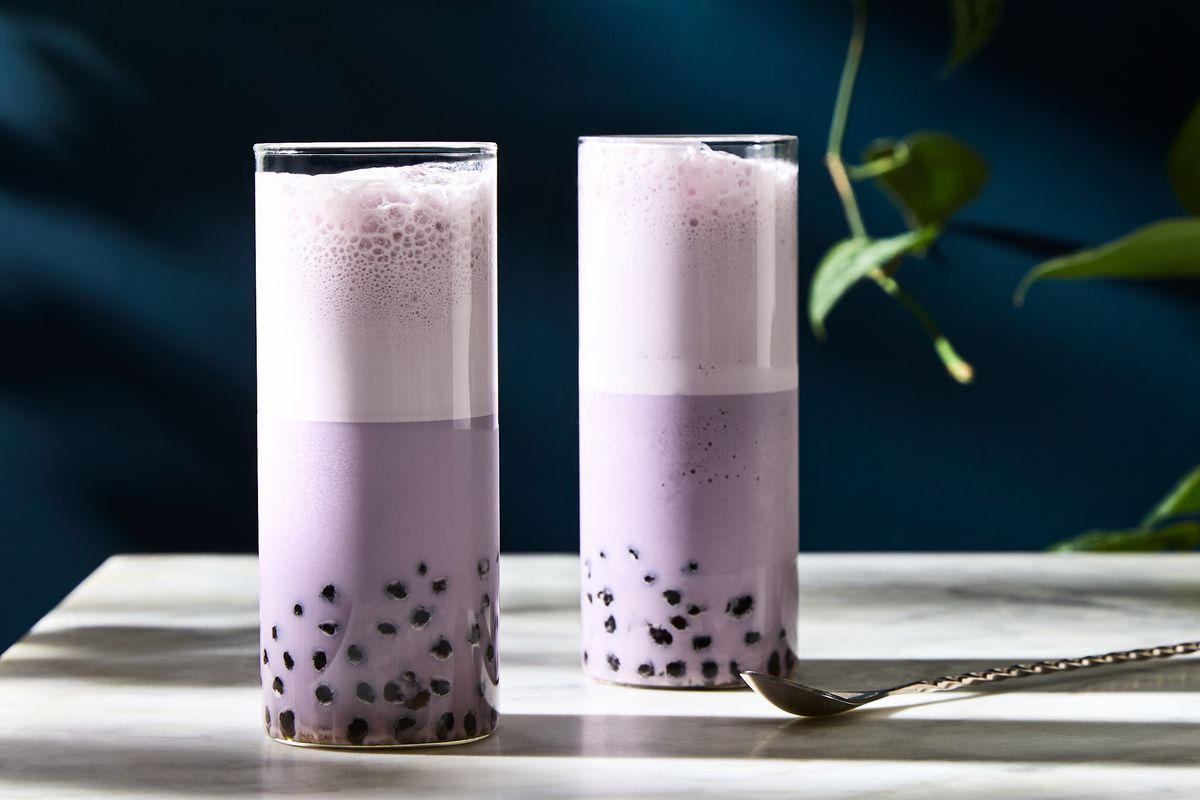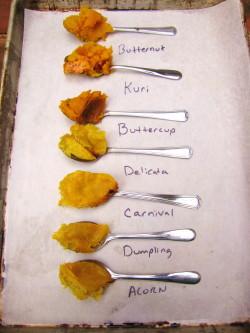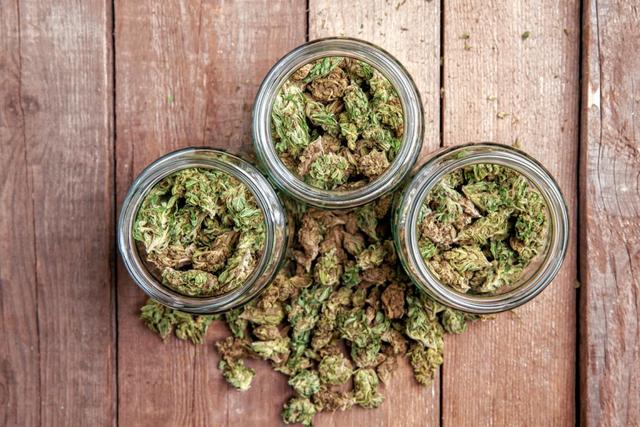
1. Exploring the Diverse Flavors of Weed: What Does Marijuana Taste Like?
Marijuana, also known as cannabis, offers a wide range of flavors that can vary depending on the strain. Each strain possesses a unique combination of cannabinoids and terpenes, which contribute to its specific flavor profile. Some strains have earthy and herbal flavors, reminiscent of soil, dampness, and woodiness. These strains may resemble the aroma of fresh herbs like sage or thyme. Examples include OG Kush, Jack Herer, and Sour Diesel.

Other strains exhibit fruity and citrusy flavors. These strains often have tangy and zesty tastes reminiscent of citrus fruits such as lemon, lime, or orange. Subtle hints of tropical fruits like mango or pineapple may also be present. Lemon Haze, Tangie, and Pineapple Express are examples of strains that offer these characteristics.
Some marijuana strains have warm and spicy flavors similar to black pepper, cloves, or cinnamon. These strains provide a mild heat and tingling sensation on the palate. They can add a nice kick to the overall taste experience. Strains known for their spicy notes include Black Widow, White Fire OG, and Northern Lights.
For those with a sweet tooth, there are marijuana strains that offer sweet and floral notes. These delicate flavors resemble flowers like lavender, chamomile, or jasmine. Sweet undertones that can resemble honey or sugar may also be present in these strains. Blue Dream, Lavender, and Cherry Pie are examples of strains known for their sweet and floral characteristics.
On the other end of the spectrum are strains with skunky or pungent aromas. Strains like Skunk #1, Sour Skunk, and Cheese are notorious for their strong scents reminiscent of a skunk or musky odor. This taste in the mouth can be polarizing; some individuals find it appealing while others find it off-putting.
The taste of marijuana can vary from one strain to another due to various factors. The genetic composition of the strain plays a role in shaping its taste, with some strains bred to emphasize specific flavors. Growing conditions, such as cultivation techniques and environmental factors like temperature and humidity, can also impact the taste of marijuana. Harvesting and curing methods are crucial in developing desirable flavors and aromas. Additionally, terpenes, which are aromatic compounds found in marijuana, greatly influence its flavor profile. Different strains have varying terpene profiles that contribute to their unique tastes.
Lastly, the method of consuming marijuana can affect the perception of taste. Smoking, vaporizing, or using edibles each have their own nuances that can impact how the flavor is experienced.
In conclusion, the taste of weed can range from earthy and herbal notes to fruity undertones, spicy accents, sweet floral hints, or even pungent aromas. With such a diverse range of flavors available in different strains, there is something for every taste preference. Whether you are a connoisseur or simply curious about exploring the world of marijuana flavors, let your taste buds guide you through this captivating experience.
2. Unveiling the Unique Taste Profiles of Different Cannabis Strains
When it comes to cannabis strains, each one has its own unique taste profile that is influenced by its genetic composition and terpene profile. Here are some examples of different taste profiles you can expect from various cannabis strains:
Earthy and Herbal
Some cannabis strains, such as OG Kush, Jack Herer, and Sour Diesel, have earthy and herbal flavors. These strains often have notes of soil, dampness, and woodiness. The taste can resemble the aroma of fresh herbs like sage or thyme.
Fruity and Citrusy
Other strains like Lemon Haze, Tangie, and Pineapple Express offer tangy and zesty flavors reminiscent of citrus fruits like lemon, lime, or orange. You may also notice subtle hints of tropical fruits like mango or pineapple in these strains.
Spicy
If you prefer spicy flavors, strains like Black Widow, White Fire OG, and Northern Lights may be more your style. These strains offer warm flavors similar to black pepper, cloves, or cinnamon. They provide a mild heat and tingling sensation on the palate.
Sweet and Floral
For those who enjoy sweet and floral notes in their cannabis, strains like Blue Dream, Lavender, and Cherry Pie are worth exploring. These strains have delicate floral flavors reminiscent of lavender, chamomile, or jasmine. You may also detect sweet undertones that resemble honey or sugar.
Skunky/Pungent
On the other hand, some individuals find skunky or pungent aromas appealing in their cannabis. Strains like Skunk #1, Sour Skunk, and Cheese are known for their strong skunky scents. This weed taste in mouth can be polarizing, with some people finding it off-putting.
Each cannabis strain offers a distinct taste profile that can range from earthy and herbal to fruity, spicy, sweet, or skunky. Exploring different strains allows you to discover the diverse and captivating flavors of marijuana.
Remember that the taste of weed can vary depending on factors such as genetic makeup, growing environment, cultivation techniques, and consumption method. So don’t be afraid to try different strains and see which flavors appeal to your taste buds the most.
3. From Earthy to Fruity: Discovering the Spectrum of Weed Flavors

When it comes to the taste of weed, there is a wide range of flavors to explore. Each cannabis strain has its own unique combination of cannabinoids and terpenes, which contribute to its specific flavor profile. Some strains have earthy and herbal flavors, while others exhibit fruity, citrusy, spicy, sweet, or skunky characteristics.
Strains like OG Kush, Jack Herer, and Sour Diesel are known for their earthy and herbal flavors. These strains often have notes of soil, dampness, and woodiness. The taste can resemble the aroma of fresh herbs like sage or thyme.
If you prefer a tangy and zesty flavor reminiscent of citrus fruits such as lemon, lime, or orange, strains like Lemon Haze, Tangie, and Pineapple Express may be more appealing to you. These strains also offer subtle hints of tropical fruits like mango or pineapple.
For those who enjoy warm and spicy flavors similar to black pepper, cloves, or cinnamon, there are strains that provide a mild heat and tingling sensation on the palate. Examples include Black Widow, White Fire OG, and Northern Lights.
If you have a sweet tooth and prefer strains with sweet and floral notes, Blue Dream, Lavender, and Cherry Pie might be your go-to choices. These strains offer delicate floral flavors reminiscent of lavender, chamomile, or jasmine with sweet undertones that can resemble honey or sugar.
On the other end of the spectrum are strains with skunky or pungent characteristics. Strains like Skunk #1,Sour Skunk,and Cheese are known for their strong and distinct aromas similar to a skunk or musky scent. This particular weed taste in your mouth can be polarizing since some individuals find it appealing while others find it off-putting.
The taste of weed can vary from one strain to another due to various factors. The genetic composition of the strain, growing conditions, and harvesting methods all play a role in shaping the taste of marijuana. Different strains are bred to emphasize specific characteristics, including variations in taste. Factors such as growing methods, cultivation techniques, and environmental conditions can also impact the taste of marijuana. Even the timing and techniques used during harvest and curing can influence the final taste of the buds.
Terpenes, which are aromatic compounds found in marijuana, are the top contributors to its flavor and aroma. Each strain has its own unique terpene profile that greatly influences its taste. Examples of common terpenes found in cannabis include myrcene (earthy, musky), limonene (citrus), pinene (pine), and linalool (floral).
The method of consuming marijuana can also affect the perception of taste. Whether you choose to smoke, vaporize or use edibles, each consumption method has its own nuances that can impact how the flavor is experienced.
In conclusion, weed can have a wide range of flavors depending on various factors such as genetic makeup, growing environment, cultivation techniques, etc. From earthy and herbal notes to citrusy undertones, spicy accents, and sweet floral hints, each strain offers a distinct taste profile. So whether you are a connoisseur or a curious explorer, let your taste buds guide you through the diverse and captivating flavors of marijuana.
4. A Journey through the Palate: Understanding the Taste of Marijuana
When it comes to understanding the taste of marijuana, it’s important to consider the various factors that contribute to its unique flavor profile. From the genetic composition of the strain to the growing conditions and harvesting methods, each aspect can play a role in shaping the taste of this versatile plant.
One factor that influences the taste of marijuana is the strain and genetics. Cannabis strains are bred to emphasize specific characteristics, including variations in taste. Some strains may have earthy and herbal flavors, while others may exhibit fruity, citrusy, spicy, sweet, or skunky characteristics. This diversity in taste is a result of different combinations of cannabinoids and terpenes present in each strain.
Another factor that can impact the taste of marijuana is the growing conditions. Factors such as cultivation techniques, grow tent temperature and humidity, and even the use of hydroponics vs soil growing can affect the flavor. Organic nutrients, proper pH levels, and optimal watering practices can also contribute to a more flavorful end product.
Harvesting and curing methods also play a role in determining the taste of marijuana. The timing and techniques used during harvest can influence the development of desirable flavors and aromas. Properly harvested buds allow for a more flavorful experience when consumed.
Terpenes are aromatic compounds found in marijuana and are considered the top contributor to its flavor and aroma. Different strains have varying terpene profiles, which greatly influence how weed tastes. Terpenes like myrcene (earthy, musky), limonene (citrus), pinene (pine), and linalool (floral) provide a diverse range of flavors and aromas that contribute to an enjoyable sensory experience.
Lastly, the method of consuming marijuana can also affect its taste perception. Smoking, vaporizing, or using edibles each have their own nuances that can impact how the flavor is experienced. For example, smoking at high temperatures can lead to a harsh or burnt flavor, while using lower temperatures can preserve the delicate flavors and avoid overpowering the taste.
In conclusion, the taste of marijuana can vary depending on various factors such as genetic makeup, growing environment, cultivation techniques, and consumption method. From earthy and herbal notes to citrusy undertones, spicy accents, and sweet floral hints, each strain offers a distinct taste profile. Exploring the diverse flavors of marijuana can be a journey for both connoisseurs and curious explorers alike.
5. The Art of Tasting Weed: What to Expect from Different Cannabis Strains

When it comes to tasting weed, it’s all about exploring the diverse flavors and aromas that different cannabis strains have to offer. Just like with wine or food, there is an art to tasting and appreciating the nuances of marijuana. Here’s what you can expect when tasting different cannabis strains:
1. Earthy and Herbal Notes
Some cannabis strains, such as OG Kush, Jack Herer, and Sour Diesel, are known for their earthy and herbal flavors. These strains often have notes of soil, dampness, and woodiness, resembling the aroma of fresh herbs like sage or thyme.
2. Citrusy Undertones
Other strains like Lemon Haze, Tangie, and Pineapple Express offer tangy and zesty flavors reminiscent of citrus fruits such as lemon, lime, or orange. You may also detect subtle hints of tropical fruits like mango or pineapple in these strains.
3. Spicy Accents
If you’re a fan of warm and spicy flavors, strains like Black Widow, White Fire OG, and Northern Lights may be right up your alley. These strains provide flavors similar to black pepper, cloves, or cinnamon, providing a mild heat and tingling sensation on the palate.
4. Sweet Floral Hints
For those with a sweet tooth or a love for floral notes, strains known for their sweet and floral characteristics include Blue Dream, Lavender, and Cherry Pie. These delicate flavors resemble lavender, chamomile, or jasmine with sweet undertones that can resemble honey or sugar.
5. Skunky/Pungent Characteristics
On the other end of the spectrum are strains like Skunk #1, Sour Skunk, and Cheese, which are known for their skunky or pungent aromas. These strains have strong, distinct aromas similar to a skunk or musky scent. The taste of these strains can be polarizing, with some individuals finding it appealing and others finding it off-putting.
In conclusion, the taste of weed can vary greatly depending on factors such as strain and genetics, growing conditions, harvesting and curing methods, terpene composition, and consumption method. Each strain offers a unique flavor profile that ranges from earthy and herbal to citrusy undertones, spicy accents, sweet floral hints, or skunky characteristics. Exploring the diverse flavors of marijuana can be an enjoyable experience for both connoisseurs and curious explorers alike.
6. Demystifying the Taste of Marijuana: A Comprehensive Guide for Beginners
When it comes to the taste of marijuana, there is a wide range of flavors to explore. Each strain of cannabis possesses its own unique combination of cannabinoids and terpenes, which contribute to its specific flavor profile. Some strains may have earthy and herbal flavors, while others may exhibit fruity, citrusy, spicy, sweet, or skunky characteristics.
One common taste found in certain strains like OG Kush, Jack Herer, and Sour Diesel is an earthy and herbal flavor. It has notes of soil, dampness, and woodiness that resemble the aroma of fresh herbs like sage or thyme.
For those who prefer tangy and zesty flavors reminiscent of citrus fruits such as lemon, lime, or orange, strains like Lemon Haze, Tangie, and Pineapple Express are often the go-to choices. These strains may also have subtle hints of tropical fruits like mango or pineapple.
If you enjoy warm and spicy flavors similar to black pepper, cloves, or cinnamon, there are strains known for providing a mild heat and tingling sensation on the palate. Some examples include Black Widow, White Fire OG, and Northern Lights.
On the sweeter side of things are strains known for their sweet and floral notes. Blue Dream, Lavender, and Cherry Pie offer delicate floral flavors reminiscent of lavender or chamomile. They may also have sweet undertones that resemble honey or sugar.
For those who appreciate more polarizing tastes in marijuana, strains like Skunk #1, Sour Skunk,and Cheese are known for their skunky or pungent aromas. These strains have strong distinct aromas similar to a skunk or musky scent.
The taste of marijuana can vary from one strain to another due to various factors. The genetic composition of the strain plays a role in shaping its taste profile. Growing conditions, such as cultivation techniques and environmental factors like temperature and humidity, can also impact the taste of marijuana. Harvesting and curing methods are crucial in developing desirable flavors and aromas. Additionally, terpenes, which are aromatic compounds found in marijuana, greatly influence its flavor and aroma.
The method of consuming marijuana can also affect the perception of taste. Whether you choose to smoke, vaporize, or use edibles, each consumption method has its own nuances that can impact how the flavor is experienced.
In conclusion, the taste of marijuana can range from earthy and herbal notes to citrusy undertones, spicy accents, sweet floral hints, or even pungent skunky characteristics. Exploring the diverse flavors of marijuana can be a captivating experience for both connoisseurs and curious beginners alike.
FAQs About What Does Weed Taste Like
1. What makes weed taste so good?
The major contributor to weed’s enjoyable flavor is terpenes. Terpenes provide a diverse range of flavors and aromas in marijuana. Examples of terpenes commonly found in cannabis include myrcene (earthy, musky), limonene (citrus), pinene (pine), and linalool (floral).
2. What weed has no smell or taste?
Some strains that are often described as having a lower odor profile include Blue Mystic, Durban Poison, Jack Herer, Master Kush, Northern Lights, Papaya, Polar Express, Sharksbreath, White Rhino.
3. How does temperature affect the taste of weed?
The temperature at which you smoke can greatly affect the taste of weed. If the temperature is too high, it can lead to a harsh or burnt flavor. It’s generally recommended to use lower temperatures ranging from 315°F to 440°F (157°C to 227°C) to preserve the delicate flavors and avoid overpowering the taste.
7. Unlocking the Secrets of Weed Flavors: How Genetics and Growing Conditions Shape Taste
When it comes to the taste of weed, genetics and growing conditions play a significant role in shaping the flavor profile. Cannabis strains are bred to have specific characteristics, including variations in taste. Some strains may have earthy and herbal flavors, while others may exhibit fruity, citrusy, spicy, sweet, or skunky characteristics.
The genetic composition of a strain determines the natural flavors it possesses. For example, strains like OG Kush, Jack Herer, and Sour Diesel have notes of soil, dampness, and woodiness. These flavors resemble the aroma of fresh herbs like sage or thyme.
In addition to genetics, growing conditions also impact the taste of marijuana. Factors such as cultivation techniques, growing methods (hydroponics vs soil), and environmental factors like temperature and humidity can influence the flavor profile. Organic nutrients, proper pH levels, and optimal watering practices can contribute to a more flavorful end product.
Harvesting and curing methods also play a role in shaping the taste of marijuana. Properly harvesting buds at the right time allows for the development of desirable flavors and aromas. The timing and techniques used during curing can further enhance these flavors.
Terpenes are another important factor that contributes to the taste of weed. Terpenes are aromatic compounds found in marijuana and are responsible for its flavor and aroma. Different strains have varying terpene profiles, which greatly influence how weed tastes.
Lastly, the method of consuming marijuana can affect how its flavor is experienced. Smoking, vaporizing, or using edibles each have their own nuances that can impact taste perception.
In conclusion, genetics and growing conditions greatly influence the taste of weed. From earthy and herbal notes to citrusy undertones, spicy accents, and sweet floral hints – each strain offers a distinct taste profile shaped by these factors. By understanding the secrets behind weed flavors, enthusiasts can appreciate the diverse and captivating tastes that marijuana has to offer.
8. Terpenes and Taste: The Role of Aromatic Compounds in Defining Weed Flavors
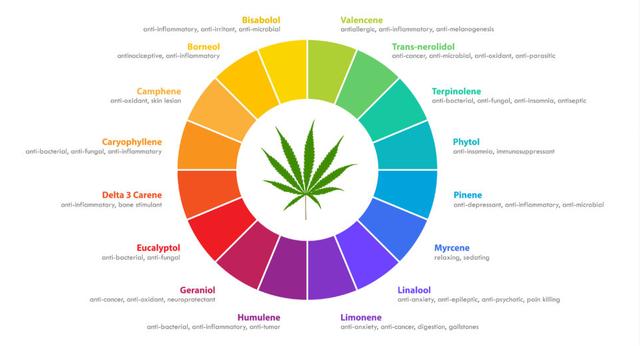
Terpenes play a crucial role in defining the flavors of different strains of weed. These aromatic compounds are found in various plants, including cannabis, and contribute to the overall taste and aroma profile of marijuana.
Each strain of cannabis contains a unique combination of terpenes, which gives it its distinct flavor. For example, strains high in myrcene may have an earthy or musky taste, while those with high levels of limonene may exhibit citrusy undertones. Other common terpenes found in cannabis include pinene (pine) and linalool (floral).
The presence and concentration of these terpenes can vary depending on factors such as genetics, growing conditions, and cultivation techniques. This is why different strains can have such diverse flavor profiles.
When consuming weed, whether through smoking or using edibles, the terpenes interact with other cannabinoids like THC and CBD to create a unique sensory experience. The combination of these compounds determines the overall taste and aroma that you perceive when consuming marijuana.
It’s important to note that individual preferences for weed flavors can vary greatly. Some people may enjoy the earthy and herbal notes of certain strains, while others may prefer the fruity or spicy accents found in others.
In conclusion, terpenes play a significant role in defining the flavors of different strains of weed. These aromatic compounds contribute to the overall taste and aroma profile of marijuana and interact with other cannabinoids to create a unique sensory experience. Whether you prefer earthy and herbal notes or fruity and spicy accents, there is a wide range of flavors to explore within the world of cannabis.
9. Smoking vs Edibles: Exploring How Consumption Methods Impact the Perception of Weed Taste
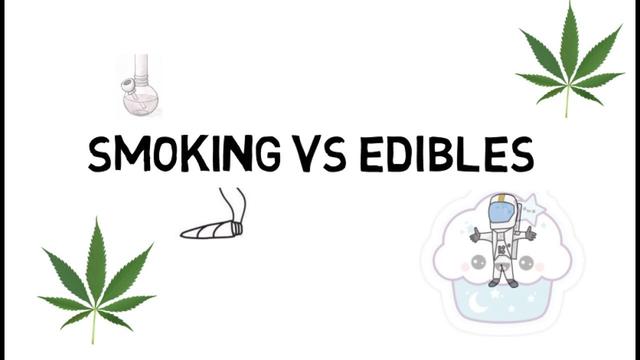
When it comes to experiencing the taste of weed, the method of consumption can greatly impact how it is perceived. Here, we will explore the differences between smoking and consuming edibles in terms of their effects on the taste of marijuana.
Smoking
One of the most common methods of consuming marijuana is through smoking. When you smoke weed, the flavors are released as the plant material is burned. The taste can vary depending on factors such as strain, growing conditions, and curing methods.
When you inhale the smoke, you may experience a range of flavors that can be earthy, herbal, fruity, spicy, or skunky. The taste can be influenced by the terpenes present in the strain, which contribute to its unique flavor profile.
The act of smoking itself can also affect how you perceive the taste. Some people enjoy the ritualistic aspect of smoking and find that it enhances their overall experience. However, others may find that smoking can lead to a harsh or burnt flavor if not done properly.
Edibles
Consuming marijuana through edibles offers a different experience compared to smoking. When you eat or drink cannabis-infused products, such as brownies or beverages, the flavors are typically more subtle and may be masked by other ingredients.
Edibles often undergo a cooking process that can alter the taste of marijuana. The flavors may become more integrated with other ingredients used in the recipe. For example, a cannabis-infused cookie may have a sweet taste with hints of herbal notes from the marijuana.
It’s important to note that edibles can take longer to take effect compared to smoking. This delayed onset allows for a slower release of flavors as they are digested and absorbed into your system.
In addition to taste differences, consuming edibles can also result in a more potent and longer-lasting high compared to smoking. This is because the liver metabolizes THC into a different compound, which can have stronger psychoactive effects.
In conclusion, the method of consumption plays a significant role in how the taste of weed is experienced. Smoking offers a more immediate and pronounced flavor profile, while edibles provide a subtler and potentially more integrated taste. Whether you prefer the act of smoking or enjoy the culinary adventure of edibles, both methods offer unique ways to explore the diverse flavors of marijuana.
10. Skunky or Sweet? Understanding and Appreciating Polarizing Weed Tastes
10. Skunky or Sweet? Understanding and Appreciating Polarizing Weed Tastes
When it comes to the taste of weed, there are certain flavors that can be polarizing among individuals. One such flavor is the skunky or pungent taste that some strains exhibit. Strains like Skunk #1, Sour Skunk, and Cheese are known for their strong and distinct aromas, which can resemble the scent of a skunk or musky odor. This particular weed taste in the mouth can be appealing to some people, while others may find it off-putting.
On the other end of the spectrum, there are strains that offer sweet and floral notes. Examples of strains with these characteristics include Blue Dream, Lavender, and Cherry Pie. These strains have delicate and floral flavors reminiscent of lavender, chamomile, or jasmine. They also have sweet undertones that can resemble honey or sugar. This type of weed taste is often enjoyed by those who prefer a more subtle and pleasant flavor profile.
Understanding and appreciating these polarizing weed tastes is important for cannabis enthusiasts. Each strain offers a unique flavor experience, and what one person may find enjoyable, another may not. It all comes down to personal preference and individual taste buds.
In addition to personal preferences, there are several factors that contribute to the taste of marijuana. The genetic composition of the strain plays a significant role in determining its flavor profile. Different strains are bred to emphasize specific characteristics, including variations in taste.
Growing conditions also impact the taste of marijuana. Factors such as cultivation techniques, growing methods (hydroponics vs soil growing), and temperature and humidity levels in grow tents can all influence the final flavor of the plant. Using organic nutrients, maintaining proper pH levels, and implementing optimal watering practices can contribute to a more flavorful end product.
Harvesting and curing methods also play a role in shaping the taste of marijuana. Properly timing the harvest and employing appropriate techniques during the curing process allow for the development of desirable flavors and aromas.
Terpenes, which are aromatic compounds found in marijuana, are another major contributor to its flavor. Different strains have varying terpene profiles, which greatly influence the taste of weed. Common terpenes found in cannabis include myrcene (earthy, musky), limonene (citrus), pinene (pine), and linalool (floral).
Lastly, the method of consuming marijuana can affect how its flavor is experienced. Smoking, vaporizing, and using edibles all have their own nuances that can impact the perception of taste.
In conclusion, understanding and appreciating the polarizing tastes of weed is an important aspect of being a cannabis connoisseur. From skunky and pungent flavors to sweet and floral undertones, each strain offers a distinct taste profile. Factors such as genetic makeup, growing environment, cultivation techniques, and terpene composition all contribute to the diverse range of flavors that marijuana can offer. Whether you prefer a skunky or sweet taste, let your taste buds guide you through the captivating world of weed flavors.
11. Enhancing Your Cannabis Experience: Tips for Maximizing Flavor When Consuming Marijuana
When it comes to enjoying the flavors of marijuana, there are a few tips and tricks that can help you maximize your experience. Here are some ways to enhance the taste of your cannabis:
1. Choose High-Quality Strains:
The quality of the strain you choose can greatly impact the flavor of your cannabis. Opt for strains that are known for their flavorful profiles and have been grown and cured properly.
2. Use Fresh Herbs and Fruits:
Adding fresh herbs or fruits to your cannabis can enhance its flavor. For example, you can infuse your joint with a sprig of mint or squeeze a lemon or lime over your bowl to add a citrusy twist.
3. Experiment with Different Consumption Methods:
Different consumption methods can bring out different flavors in cannabis. Try smoking, vaporizing, or using edibles to see which method provides the most enjoyable taste for you.
4. Properly Store Your Cannabis:
Storing your cannabis properly is crucial in preserving its flavor. Keep your buds in an airtight container in a cool, dark place to maintain their freshness and prevent them from drying out.
5. Take Small, Slow Puffs:
When smoking or vaping cannabis, taking small and slow puffs allows you to savor the flavors more effectively. This also helps prevent overheating the weed, which can result in a harsh taste.
6. Clean Your Smoking Devices:
Residue buildup in smoking devices can affect the taste of your cannabis. Regularly clean your pipes, bongs, or vaporizers to ensure that you’re getting the purest flavor from your weed.
7. Pair Cannabis with Complementary Flavors:
Just like wine or food, cannabis can be paired with complementary flavors to enhance the overall taste experience. Consider pairing your weed with foods, drinks, or spices that complement its flavor profile.
8. Take Note of Terpene Profiles:
Terpenes play a significant role in the taste and aroma of cannabis. Take note of the terpene profiles of different strains and experiment with ones that have flavors you enjoy.
9. Practice Mindful Consumption:
To fully appreciate the flavors of cannabis, practice mindful consumption. Take your time to savor each puff and pay attention to how the taste evolves on your palate.
10. Experiment with Different Strains:
Don’t be afraid to try new strains and explore their unique flavor profiles. Each strain offers a different taste experience, so broaden your horizons and discover new favorites.
By following these tips, you can enhance your cannabis experience and fully enjoy the diverse flavors that marijuana has to offer. Remember to consume responsibly and always prioritize your safety and well-being.
In conclusion, the taste of weed can vary greatly depending on the strain and method of consumption. Some describe it as earthy, herbal, or even fruity, while others may find it bitter or harsh. Personal preferences and experiences play a significant role in how individuals perceive the taste of marijuana.
Learn More About Grilling
If you want to learn more about grilling, check out these other helpful resources!




